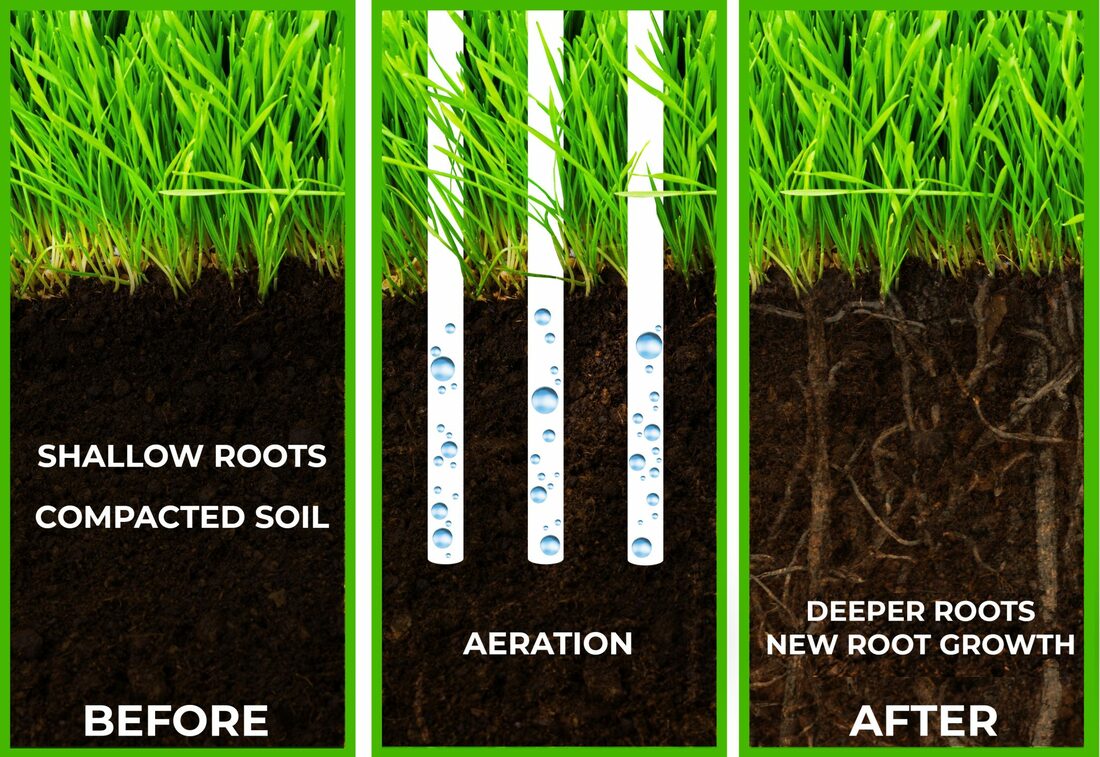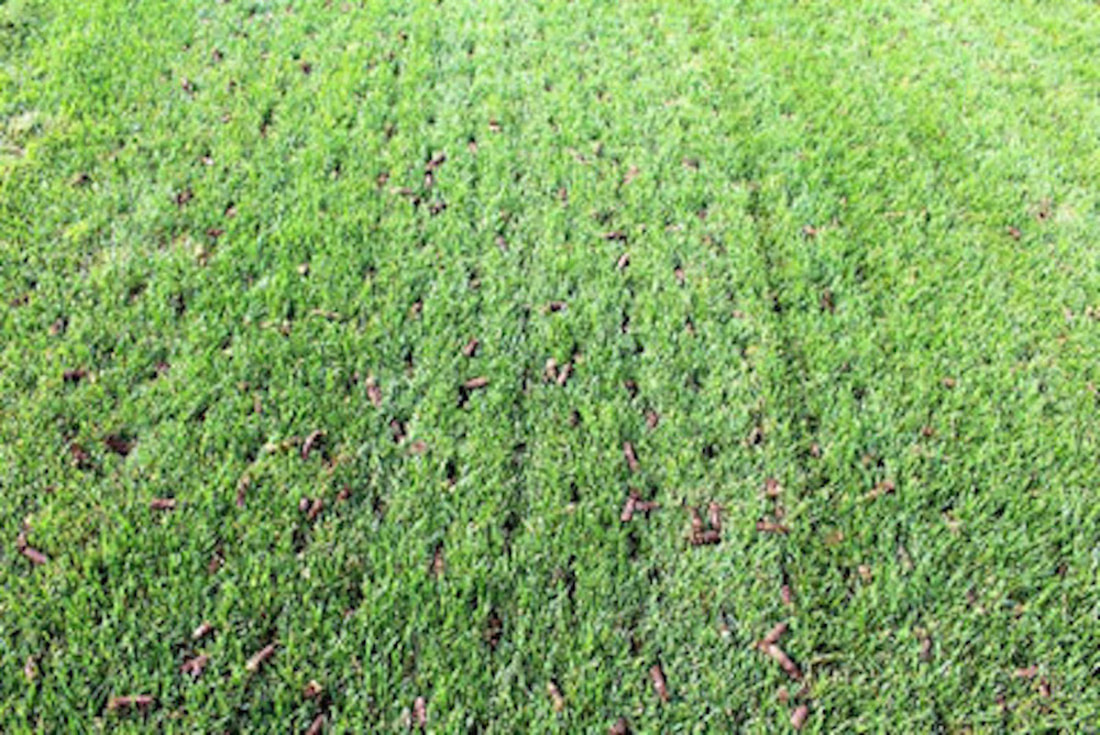The Basics: Core aeration is a form of soil cultivation through the process of removing plugs of soil and thatch from the turf by passing a drum with hollow tines over the surface. Core aeration reduces soil compaction, promoting a greater exchange of air between the soil and the environment. The breakup of soil compaction creates small channels which allow water, oxygen, and nutrients to reach the turf roots.
The Benefits: Core aeration will not only make your turf healthier and more enjoyable, the process will save you money by reducing your maintenance needs. Professional lawn aeration results in the following benefits:
The Right Time: Aeration in the spring will increase water absorption and encourage a thick lawn throughout the growing season. Fall aeration will help to break up the soil compaction which will naturally occur due to regular watering and the constant hardening from sunlight. Cool climate grasses like Kentucky Blue-grass and Rye-grass enjoy spring aeration to break up thatch that accumulates through the winter, while fall aeration enhances root growth which will promote a quick spring greening. Aerate regularly to maximize the efficiency of each core cultivation service.
The Results: Following your core aeration, you will notice many small plugs of soil across your lawn. These plugs are intentionally left behind and will return necessary microbes when they disappear into the soil. The core cavities will now allow water and nutrients to penetrate much deeper into the soil.
Your lawn can now sustain longer periods without water. If you previously experienced pooling or poor drainage, you will see an immediate correction of this issue. Regular aeration will strengthen your lawn to withstand heat and drought stress. Within two weeks you will notice white roots spreading into the core cavities. This is a sure sign your lawn growth is promoted by core aeration.
The Benefits: Core aeration will not only make your turf healthier and more enjoyable, the process will save you money by reducing your maintenance needs. Professional lawn aeration results in the following benefits:
- Increased oxygen deeper in the soil where grass roots reside.
- Promoted soil water uptake and reduced water runoff and pooling.
- Improved fertilizer uptake and less wasted product.
- Reduced soil compaction allows for stronger roots and more turf growth.
- Less “baking” and “caked” soil, lowering heat and drought stress damage.
- Enhanced turf resiliency and cushioning under each step.
- Promoted thatch breakdown through organic microbial decomposition.
The Right Time: Aeration in the spring will increase water absorption and encourage a thick lawn throughout the growing season. Fall aeration will help to break up the soil compaction which will naturally occur due to regular watering and the constant hardening from sunlight. Cool climate grasses like Kentucky Blue-grass and Rye-grass enjoy spring aeration to break up thatch that accumulates through the winter, while fall aeration enhances root growth which will promote a quick spring greening. Aerate regularly to maximize the efficiency of each core cultivation service.
The Results: Following your core aeration, you will notice many small plugs of soil across your lawn. These plugs are intentionally left behind and will return necessary microbes when they disappear into the soil. The core cavities will now allow water and nutrients to penetrate much deeper into the soil.
Your lawn can now sustain longer periods without water. If you previously experienced pooling or poor drainage, you will see an immediate correction of this issue. Regular aeration will strengthen your lawn to withstand heat and drought stress. Within two weeks you will notice white roots spreading into the core cavities. This is a sure sign your lawn growth is promoted by core aeration.






